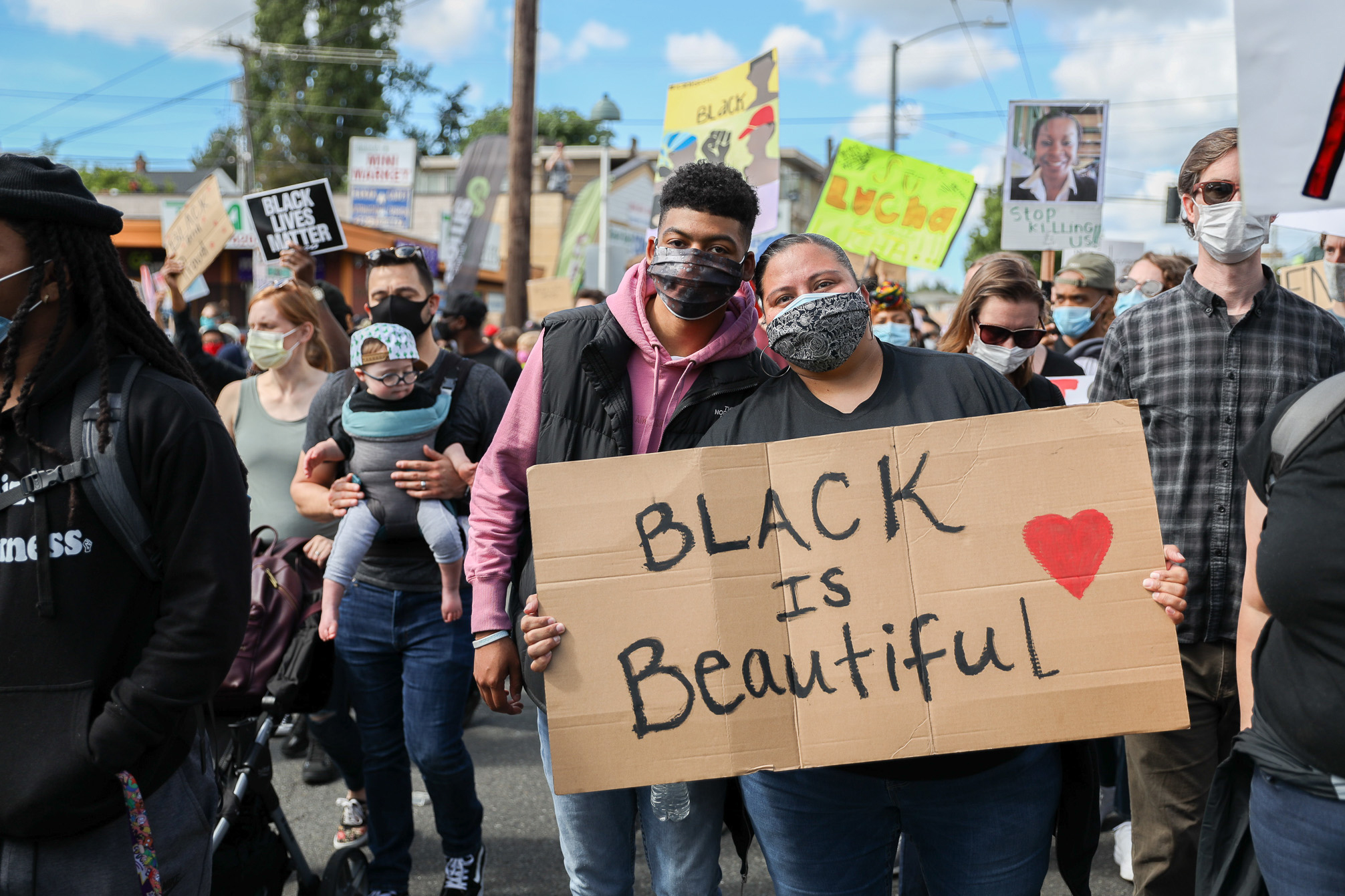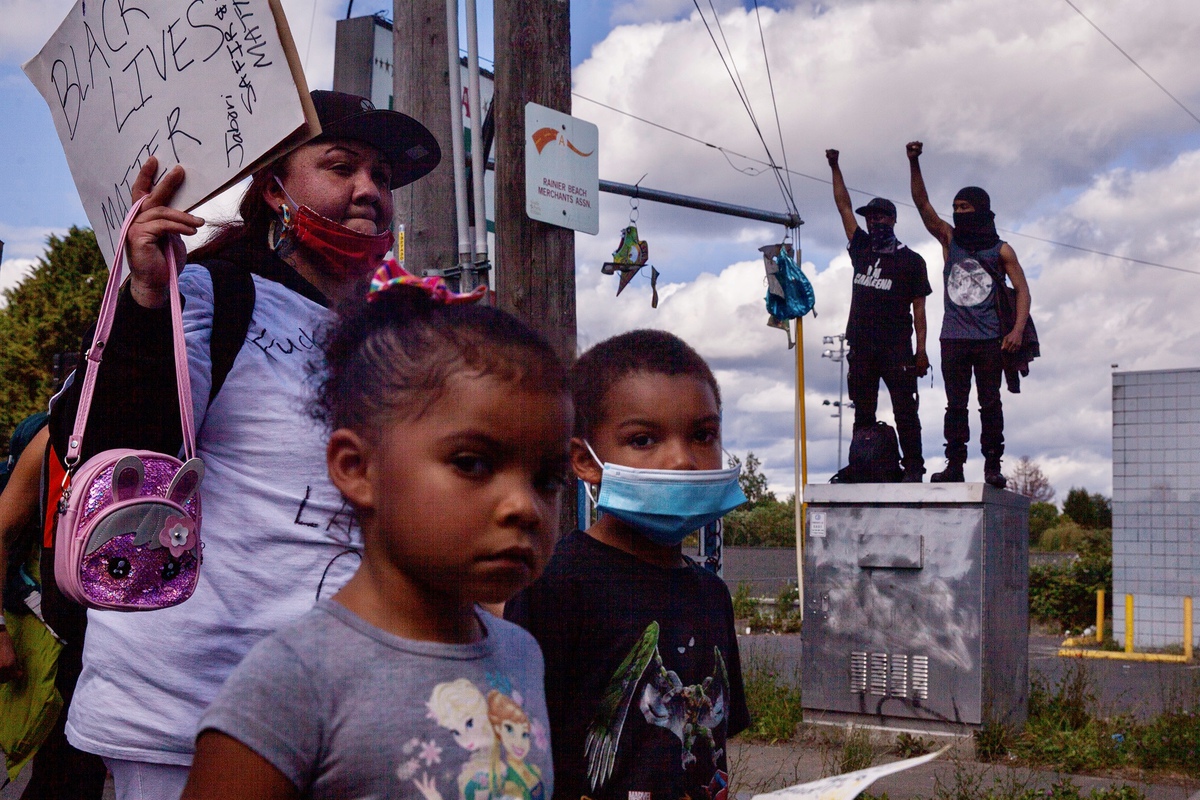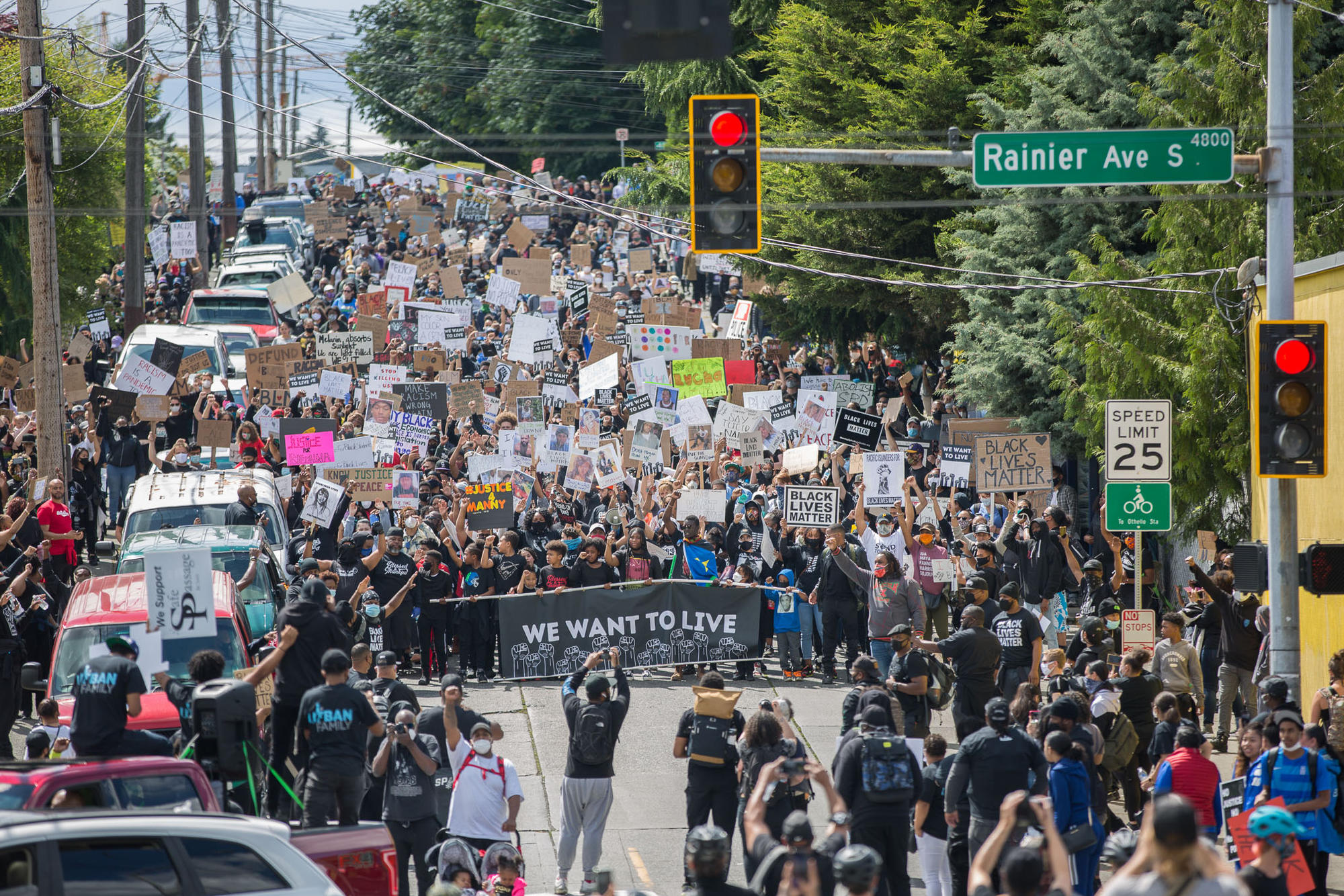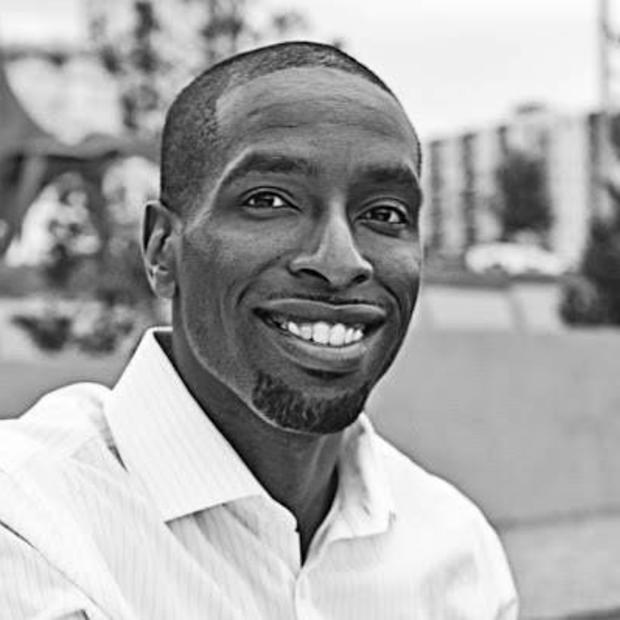The last one I attended occurred after the killings of Philando Castile and Alton Sterling by police officers in 2016. Submerged in tormented shouts of “Blacks Lives Matter,” I situated myself in downtown’s Westlake Park where the march began. My cynicism anchored me there, kept me from proceeding, while the mass of people and their chanting moved farther up Pine Street.
Nailing me in place was the conviction that this country would never care for Black people. At least never care more than enough to believe that uttering the right phrase would absolve oneself of racism. It would only ever subordinate Black Americans’ unique struggles as identity politics, never critical priorities. It would never stop believing that one exceptional individual with black skin placed in a position of power somehow meant racial equality, or that racism was over. It would continue to believe in the magical thinking that says racial justice is achieved by class equality.
Any visions I possessed of a better world perished as the deaths of Black people mounted. I resigned myself to the belief that I’d never witness a nonracist world in my lifetime, or any other. I thought time devoted to marches and rallies raging against Black death was better spent alongside my family. There was no telling when others might be chanting their name. A police encounter could sweep them to the grave in an instant, as it had with Garner and Taylor and all the others. So I needed to cherish them now, as often and as deeply as I could.
In my brother Antonio, I saw a man who has grown from his insecurities as an adoptee to a firm but fair basketball coach, now inspiring youth in the south end, a man who I can debate endlessly, and comically, about who is actually the greatest basketball player of all time (obviously it's Lebron). Once a boy who blazed with anger over his life’s circumstances, he had become a man whose jokes make our family laugh so hard that BBQ sauce flies from our mouths at family barbecues.
In him, I saw what society wouldn’t. It would see his skin and broad stature as a fear multiplier.
How, in a society where police kill Black people at a rate 2.5 times higher than whites, would he not one day be reduced to a threat? Or killed jogging, the same way as Ahmaud Arbery was?
In my precious, 18-month-old great-niece Sierra, with her french fry obsession and chubby cheeks, I saw unbridled joy. But I knew society could one day condemn her to the ranks of the 39% of Black children who live in poverty or the 27.4% of Black Americans who live in poverty as adults. How would society not prematurely end her life with a no-knock warrant turned fatal, as it has for at least three Black women since 2003?
No, I thought back then, better to spend as much time as I could while they were here.
This was the despondency and resignation I felt as the fires started to blaze in Minneapolis late last month. I had little hope these embers would spark a revolution. I felt this even as marches proliferated in small towns that heretofore didn’t seem to know Black life existed, let alone mattered. But something began to stir inside me last Sunday, as I watched nearly 10,000 demonstrators representing a multiplicity of life pour into the meadow at Othello Park in South Seattle. I began to think not about the dead, but about the living, remembering that I was part of the latter, and what being a member of its ranks means for our future.
On a day usually reserved for worship of the Christian faith, I found my own faith restored in humanity.
Derrick Wheeler-Smith, one of the organizers of last Sunday’s “We Want to Live” rally, was as good a proselytizer as any. Skeptical of how mainstream media might cover a Black Lives Matter protest hosted in South Seattle, he asked that I attend so I could see the truth for myself.

With the Seattle Police Department largely absent, in compliance with the wishes of organizers, he wanted me to experience the momentum that had accrued after 10 days of protests, the masses of everyday people across class, race and gender, all motivated by the desire for a society without racism.
As the sun shined down that afternoon, I stood in Othello Park, awash in a sea of rallygoers in black shirts and medical masks, a crowd larger than any I’ve ever seen in over 30 years of visiting that park. The calls of Black Lives Matter were familiar. The sight of allies of all races, with signs that read “White Silence is Violence” and “Not again,” was, too.
In the middle of a rapturous affirmation of Black lives, I wondered if the aftermath of this moment would be any different from all the other ripples that had dissolved instead of cresting into society-shaping waves?
And so I asked people the only question I felt mattered on this day. How do we sustain this latest collective awakening?
I admire the formal organizations that are carrying the load of this movement both nationally and locally. But it is everyday people who form the heartbeat of a culture that pumps blood into our politics, our culture and our civic life. Until they change drastically, nothing else will.
Recent developments had begun to soften my cynicism. The New York Times bestseller list turning into an anti-racist reading guide; Dallas adopting a "duty to intervene" rule requiring officers to stop other cops who are engaging in inappropriate use of force; more Confederate monuments being removed in Southern states; a sitting Washington state Senator expressing a commitment to fight racism in ourselves and our communities on the Senate floor— all this slowly began to persuade me that something was changing.
But more than anything, I have been moved seeing previously “colorblind” neighbors and roommates replacing escapist entertainment on their YouTube feeds with daily video lectures dissecting how structural racism works and manifests itself in society. A subject that once provoked indifference now captured their full concentration.
That quiet consistency, while perhaps not as dramatic as marching, can be just as profound, and just as necessary, according to Lindsay Hill, a veteran of all those marches I’d been absent from the last five years. She sees something now that has been missing from them in the past.
“For the first time, I feel like people do see the personal impact [of racism],” says Hill. But she had been cautious of getting her hopes up that change would follow George Floyd’s death, as she had witnessed so little after those of Eric Garner, Tamir Rice and Trayvon Martin.
Hill visited Ferguson, Missouri, last year on the anniversary of Michael Brown’s death. She says the feeling is palpably different this time, possibly due in part to the coronavirus pandemic raging through the country, causing people to understand how much one person’s humanity depends on the health and safety of others.
Of course, it's hard not to acknowledge the possibility that this is an instance of “fool me once, shame on you, fool me twice, shame on me,” as Hill put it. But, she added, she thinks she’s “sold” on people being committed to the journey this time. I, too, believe there are more fellow travelers than before.
Hill also noted that after the massacre of nine Black parishioners in Charleston, South Carolina, there were relatively few companies who put out statements. In the wake of George Floyd’s killing, it's easier to count the organizations who didn’t, with even the National Football League issuing a mea culpa for ignoring its players on matters of racial justice.

But for Hill, ordinary people are the ultimate forecasters of our future, and their recent actions give reason for hope that the clouds of chaos will abate. Coming from a Friday march, she and her family passed by Columbia City homes in a neighborhood that was once predominately Black, but has more recently been referred to as “Mayberry” by The Seattle Times. She saw the white homeowners outside their homes holding up Black Lives Matter signs, with other almost exclusively white people honking in support of a message that should become a social maxim.
“Our humanity is intertwined,” she says. ”We are all not OK until every one of us is. I just started crying as we were driving around.”
Soon after, demonstrators formed a massive human amoeba of black, worn in solidarity with the BLM movement, marching 2 miles to the Rainier Beach Safeway. The ending point was deliberate. Just two weeks prior, a young Black man had been shot and killed there.
Organizers overran grounds where death recently commiserated, with a living affirmation of Black life. They brought along a message that requires perpetual resurrection: We always have a choice of hope or despair. Sunday made me choose the former for the first time in nearly half a decade.
Our world remains as it is only by our captivity to the status quo. It is an oppression enforced by our inability to dream of spring in the depths of our society's winters. To know freedom, to know hope, is to allow ourselves the rendering of a world not yet born, but laboring it to be — conversation by conversation, march by march, epiphany by epiphany, day by day.
I see it now. I glimpsed a piece of it last Sunday in Othello Park. This promised land that loves my brother and bubble-cheeked great-niece as much as I do.



